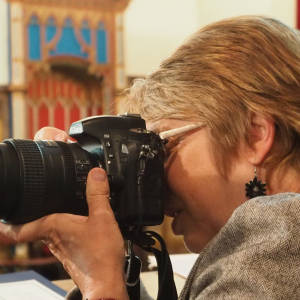'and SUMMER's lease hath all too short a date'
Taken from Sonnet 18 by William Shakespeare, this line seemed to fit the bill for today and the MM challenge of Summer. It has been a warm but cloudy day with grey clouds and really quite dull, although there were definite spells of sun as I was out walking the dog. I wanted to find a field of corn, not necessarily golden as with mono it didn't really matter. I came across this vast field and, as it was also quite windy, opted for HDR treatment in camera to get the crop's movement within the image. This crop will be a little while ripening although there are hints of yellow among the green. With a bit of Topaz filter, I liked this shading best as all black was too harsh.
Sonnet 18 has one of the best known openings... 'Shall I compare thee to a summer's day....' and the full sonnet can be found here. The sonnet is an interesting form of poetry - not easy to do well but a relatively common structure used by poets. If you are interested I have added some information below.
Shakespearean Sonnet Basics:
Iambic Pentameter and the English Sonnet Style
Shakespeare's sonnets are written predominantly in a meter called iambic pentameter, a rhyme scheme in which each sonnet line consists of ten syllables. The syllables are divided into five pairs called iambs or iambic feet. An iamb is a metrical unit made up of one unstressed syllable followed by one stressed syllable. An example of an iamb would be good BYE. A line of iambic pentameter flows like this:
baBOOM / baBOOM / baBOOM / baBOOM / baBOOM.
Here are some examples from the sonnets:
When I / do COUNT / the CLOCK / that TELLS / the TIME (Sonnet 12)
When IN / dis GRACE / with FOR / tune AND / men’s EYES
I ALL / a LONE / be WEEP / my OUT/ cast STATE (Sonnet 29)
Shall I / com PARE/ thee TO / a SUM / mer's DAY?
Thou ART / more LOVE / ly AND / more TEM / per ATE (Sonnet 18)
Shakespeare's plays are also written primarily in iambic pentameter, but the lines are unrhymed and not grouped into stanzas. Unrhymed iambic pentameter is called blank verse.
Sonnet Structure
There are fourteen lines in a Shakespearean sonnet. The first twelve lines are divided into three quatrains with four lines each. In the three quatrains the poet establishes a theme or problem and then resolves it in the final two lines, called the couplet. The rhyme scheme of the quatrains is abab cdcd efef. The couplet has the rhyme scheme gg. This sonnet structure is commonly called the English sonnet or the Shakespearean sonnet, to distinguish it from the Italian Petrarchan sonnet form which has two parts: a rhyming octave (abba abba) and a rhyming sestet (cdcdcd). Only three of Shakespeare's 154 sonnets do not conform to this structure.

Comments
Sign in or get an account to comment.


